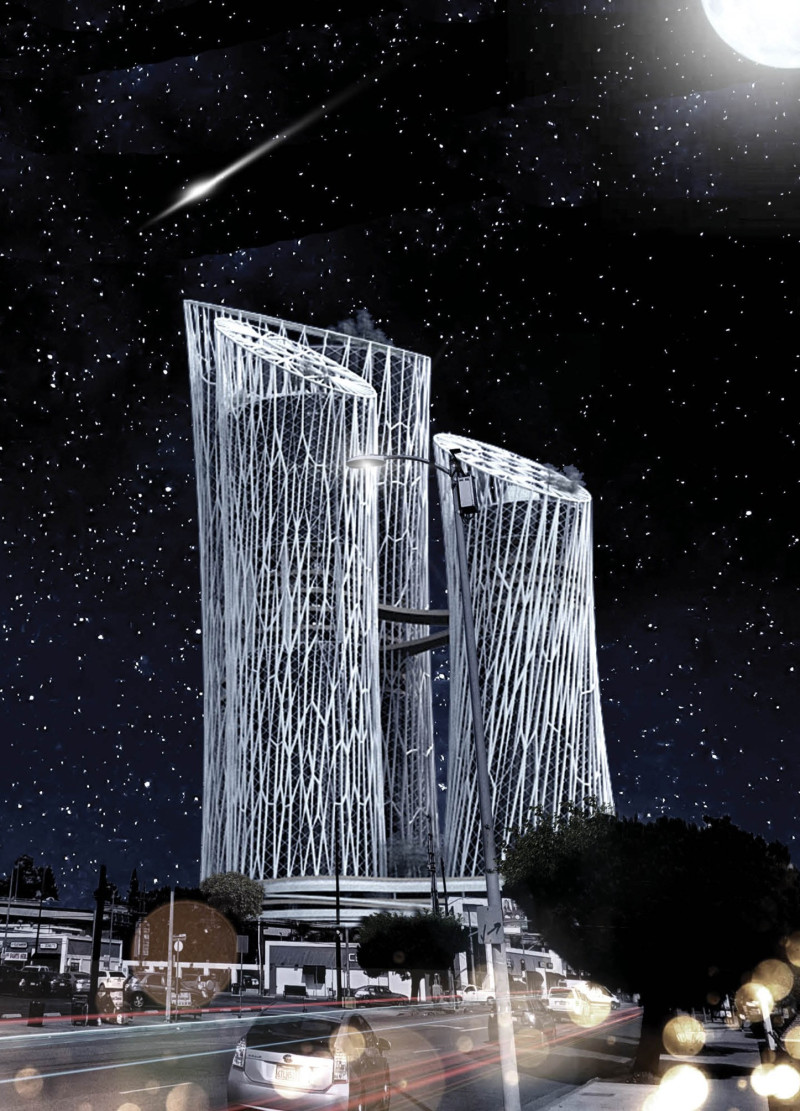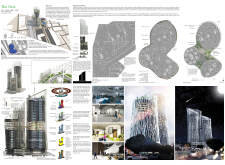5 key facts about this project
Innovative Integration of Functions
The Nest represents an innovative approach to urban living, addressing the increasing demands of growing cities. The architectural design features multiple cylindrical towers, which symbolize growth and interconnectedness, supporting a multi-use environment where residents can live, work, shop, and farm. This integration not only reduces the need for transportation but also creates a vibrant community hub that encourages social interaction.
One of the standout features of the project is its focus on vertical farming, allowing residents to engage in agricultural activities directly within the urban context. This design approach minimizes food transportation emissions while promoting food security and access to fresh produce. The inclusion of green facades enhances air quality and visual aesthetics while providing unique habitats for urban wildlife.
Sustainable Material Choices
The materiality of The Nest is thoughtfully curated to reflect the project's commitment to sustainability. Reinforced concrete ensures structural stability, while extensive use of glass enhances natural light penetration and visual connectivity between indoor and outdoor spaces. Steel is employed in the framework, enabling the innovative cylindrical forms of the towers. Notably, recycled materials are integrated throughout the design, reinforcing the project’s focus on reducing environmental impact.
The organization of the site layout further complements the project's goals. Central green courtyards serve as communal spaces, promoting interaction among residents, while pedestrian pathways encourage accessibility and ease of movement. The intricate balance of private and communal areas in the design fosters a sense of community and belonging.
Overall, The Nest exemplifies a forward-thinking approach to urban architecture, prioritizing functionality and sustainability in a cohesive design. For those interested in exploring its architectural plans, sections, and detailed designs, a deeper look into this project will provide valuable insights into contemporary architectural ideas and methodologies.























